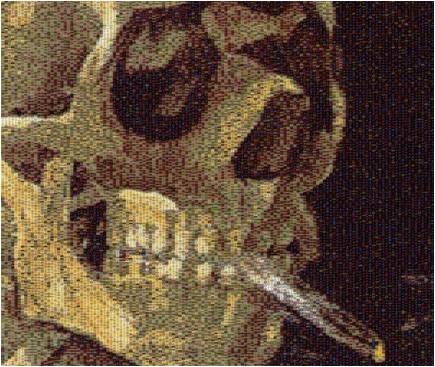For starters, a photojournalists main objective would have to be identified first. A photojournalists objective is to "uncover reality"- that is, to present truth to its viewers (Ratavaara, 2009). In relation to Week 10's topic (cyborgs), a camera for a photojournalist is like an extension of their vision, thus their main goal is to transfer what they see and disseminate that image to a wider audience.
 |
| Image taken from: http://www.bbc.co.uk/news/in-pictures-20166740 |
a) Why did you choose this news over others?
I have chosen this news over others because just from
observing this photojournalist image we are able to easily understand without
the needs to read the description. The picture above showing the deprived
environmental condition even the human (looking at the boy closing his nose)
showing that he even barely able to withstand the situation. I have also chosen
this particular news because it successfully captured my attention wanting to
know more about this news in particular and anything to do with the environmental
concern always intrigues me.
b) Is the narrative component of the story necessary or is the picture enough to express the intended message of the news?
Both are actually important this is because the audience
assumption might not be certainly true so the narrative component of the story
is necessary to support the intended message of the photographer.
For example one of the most widely known photographs, which is Kevin Carter's famous powerful images depicting the plight of a Sudanese child crawling towards a United Nations Food camp and the vulture that was eying it to be its next prey. Can you tell the message just through the picture? No right? As it could have been a scene from a movie or a photo-shoot? So a description is needed to know the message behind the image. Although a good photojournalistic should be able to portray a story in a single image, it is still impossible to know the whole 'truth' by just capturing an image without any narrative component.
From the surface, it may seem like photograph has no right or wrongs. But, when you're dealing with an audience, adhering to the age long belief that unless its art, photographs are meant to depict reality (Ratavaara, 2009), it is a completely different issue. As there are a wide array of truths that people aren't aware of as some of them are too gory or seemingly doesn't fit in our world, brings about a set of codes, ethics that photojournalists are supposed to adhere to. "Supposed" is used here because like the saying, "all rules are meant to be broken"
According to Warbuton (1998), "typically the viewer does not have the detailed information about the conditions under which photojournalistic images were taken. Minimal information is usually carried in caption, accompanying text, or else implied by the context of presentation". In other words, clearly many photographs have the potential to be misleading about what was going on, so it is important that the context of presentation communicates directly through captions, accompanying stories, etc. So presenting photographic illustration is acceptable, provided that you make clear from the context, or explicit in the caption that is what you are doing.
c) Did the picture and writings capture the "truth" of the event?
In relation to the photojournalist image I have chosen above, the image was accompanied with a caption "With the end of the rainy season, Sierra Leone's worst outbreak of cholera in nearly 15 years has finally begun to recede. The crisis has focused attention on the dire living conditions in the slum areas of Freetown, where the disease hit hardest." Reading this caption has helped me to understand the news in more clear depth knowing the 'truth' from the caption itself.
To end this entry, I will end with a quote; According to Warburton (1998), but they
(photographer) can carry a distinctive kind of evidence, and they can put us
into a closer relationship with their subject-matter than any other kind of
still pictures. This meaning what the photographer ‘eyewitness’ implies by
virtue of its display through their photojournalist images accompanied with
minimal information has evidently support their message which has guide us to
their interpretation that they wished to convey to us as the audience.
References:
Ratavaara, N. (2009). Ethics in photojournalism. Finland: GRIN Verlag.
Warbuton, N. (1998). Electrical photojournalism in the age of the electronic darkroom. In Kieran, M. (ed), Media ethics (pp.123-134). London: Routledge.




